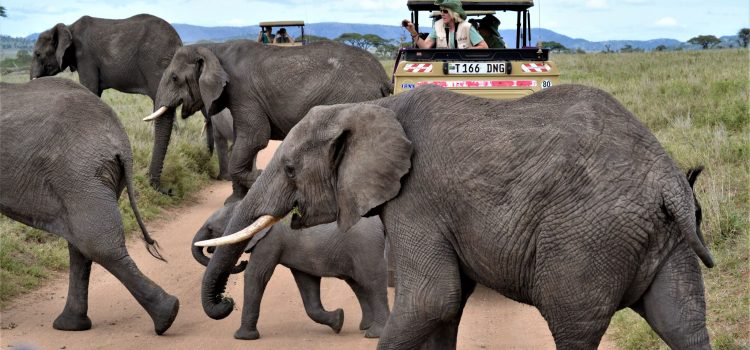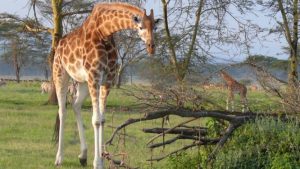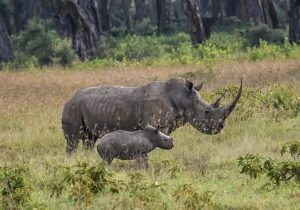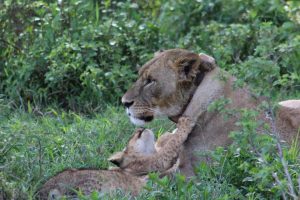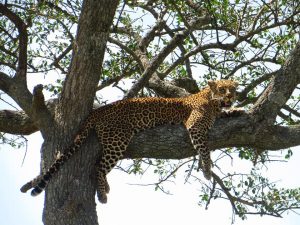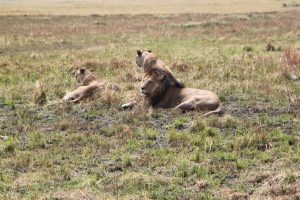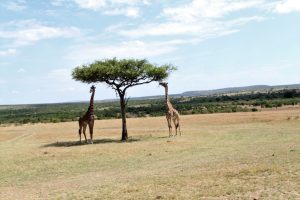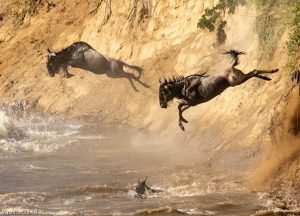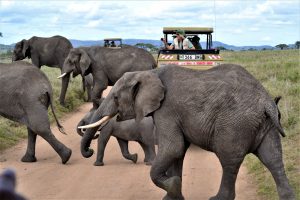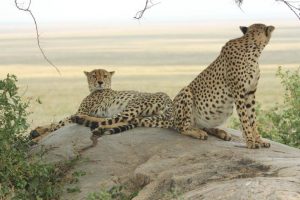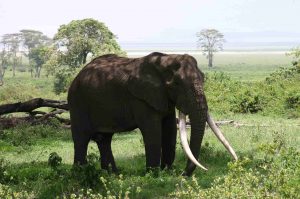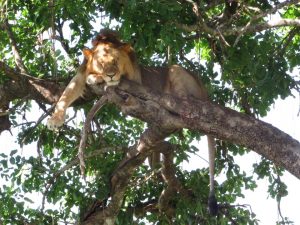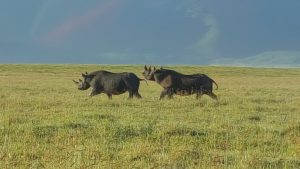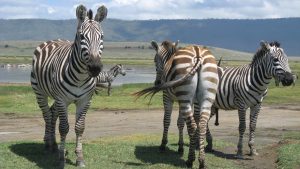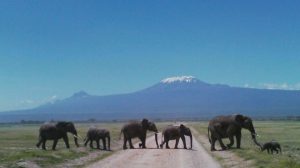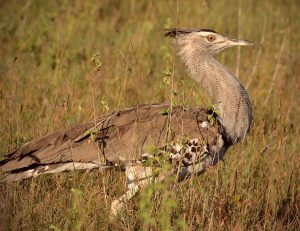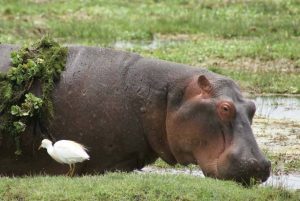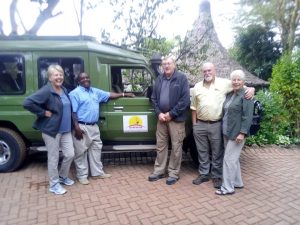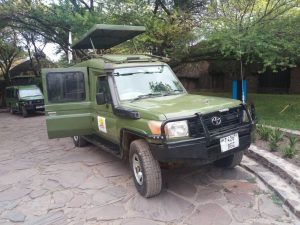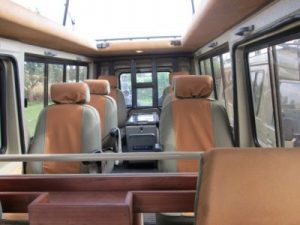How to plan and book the best Kenya & Tanzania combined wildlife safari
That Kenya and Tanzania are the top safari destinations that come to mind when many wildlife and adventure safari enthusiasts think of Africa is not much debatable. This is because these two East African countries which border each other offer the most authentic African wildlife safari experiences that give you a rare chance to experience Africa’s untamed wildlife from the front row seat.
The next thing that comes to mind is deciding if to book a safari to Kenya only, to Tanzania only or a safari which combines both. There are so many people out there who still keep on wondering on which of the two countries offers the better safari experience than the other.
To be honest, you can’t compare Kenya and Tanzania like for like, neither can you compare any park in Kenya to another in Tanzania. Every national park you visit will have some similarities to another near it, or even far across the border, but they will not be the same. You will always find a unique thing about each destination that you visit. Case in mind is the Masai Mara National Reserve in Kenya and Serengeti National Park in Tanzania. Although they share the same eco system, you will find both similarities and differences when you visit each. This is why we took our time to write a blog on choosing between a Masai Mara and Serengeti safari. Which park is best between Serengeti and Masai Mara?
Based on our expert advise on the blog and other reasons that we are going to give below, you will note that it is highly advisable to combine a safari to Kenya and Tanzania if you can afford it timewise and budget wise. You don’t have to choose between the two when you can visit both.
With Kenya having over 60 national parks and reserves, and Tanzania boasting of 22 national parks and the world famous Ngorongoro Crater Conservation Area, one would be forgiven to think that they will need months to explore the two countries during one visit. That would be a possibility if they were to visit each and every park and reserve. In this blog, we will focus on the highlights / leading parks in Kenya and Tanzania, and a hand-crafted safari itinerary which will ensure that you get the best possible safari experience on a minimum 12 days and maximum 14 days tour.
SAFARI OVERVIEW:
Day 1- Nairobi
Day 2- Lake Nakuru National Park
Day 3- Masai Mara National Reserve
Day 4 and Day 5- Masai Mara
Day 6- Serengeti National Park
Day 7- Serengeti National Park
Day 8- Ngorongoro Crater
Day 9- Lake Manyara National Park
Day 10- Amboseli National Park
Day 11- Amboseli
Day 12- Departure
Nairobi: The Green City in the Sun is East Africa’s most advanced and vibrant city. At least one night here is recommended. This helps kill the jet lag and acclimatize to the local weather for those who may be arriving on long haul flights. Also, most safaris depart at between 0700 hrs and 0730 hrs while a good number of international flights arrive at night. (If you can spare an extra night, the city is full of activities. A day tour to the Elephant Orphanage which is managed by the Sheldrick Wildlife Trust and the Giraffe Center where you can get up close with the rare Rothschild’s Giraffe would be a great idea. You may also visit the Nairobi National Museum and try out lunch or dinner at The Carnivore Restaurant or the Karen Blixen Coffee Garden Restaurant).
Lake Nakuru National Park: This is without doubt one of Kenya’s most popular national parks going by the number of both local and international tourists that visit this small park annually. Located about 3.5 hours drive from Nairobi City, the park which also hosts the alkaline Lake Nakuru is a safe refuge for the endangered Rothschild’s Giraffes and both White and Black Rhinos. It is one of the best places in Kenya to see Rhinos, which are part of Africa’s BIG FIVE. The park is home to four of the Big 5; Lion, Rhino, Buffalo and Leopard with only Elephants missing out since its small surface area cannot host the heavy feeding giants without causing a human – wildlife conflict. Seasonally, you will also be able to see the Lesser and Greater Flamingos that inhabit the lake when the alkalinity levels in its waters are high. Yes, you might miss a sighting of a Rhino during your game drives in Masai Mara or Serengeti but you will be very unlucky to miss one in Lake Nakuru, and that is why we have it as a highlight park while on your Kenya and Tanzania combined safari. One night at Lake Nakuru would be enough but you could still add one more if you want to explore the park deeper.
Masai Mara National Reserve: This, together with the adjacent Serengeti are arguably Africa’s leading and best-known parks. Masai Mara boasts of a high Big Cats to area ratio, making it one of the best parks to see Lions, Cheetahs, Leopards without having to drive for tens of kilometers. (Sometimes you even find them within meters of each other). The reserve is home to several Prides of Lions and Cheetah coalitions. Being home to over 90 mammal species and over 450 bird species, the Mara ecosystem offers you an opportunity to sight all of the BIG 5, Giraffes, Hippos, Zebras, Elands, Topis, Crocodiles, Spotted Hyenas, Wildebeests, Jackals, Vultures, Marabou Storks, Eagles, Egrets, Herons, Secretary Bird among others with relevant ease. This, together with the fact that some camps and park entrance fees and other levies are cheaper in Masai Mara compared to Serengeti are the reason we recommend 3 nights in the Mara as it offers you more value for money.
Serengeti National Park: After 3 nights in Masai Mara, we recommend at least 2 nights in the vast Serengeti National Park. Although the parks border each park, tourists have to exit one park and drive for hours to enter the other. This is because there are no official immigration posts at the park’s borders. One has to drive or fly all the way to Isebania / Tarime border crossing point where immigration offices are located. Please note that a drive from Masai Mara to Serengeti can take up to 10 hours. One can fly from Masai Mara to Migori town, from where they will be driven to Tarime border, where they will clear with immigrations and enjoy another short flight to Serengeti. This option is recommended for those who can afford the not so cheap flights between African parks.
It is indeed the dream of every nature and wildlife lover to visit the Serengeti and your game drives here will often exceed your expectations. From Lions to Cheetahs, Buffalos to Elephants, Leopard and Spotted Hyenas (which are the boogey men of the African night), Zebras, various Antelopes and millions of Wildebeests, Serengeti has it all. One moment you will find Lions enjoying a kill and the next moment you might find Cheetahs atop one of the Kopjes as they bask in the sun or scan the plains for the next victim. If you are after witnessing the Wildebeest migration, Serengeti is the place to be especially during the months of April, May, June, September, October and November when the world’s greatest wildlife spectacle unfolds here. The array of bird species is also awe inspiring and you will be thrilled by sightings of Ostrich, Vultures, Eagles’ and hundreds of other bird species not to mention the breathtaking scenery especially at sunrise and sunset.
The Ngorongoro Crater: Popularly referred as “Africa’s last garden of Eden”, a tour of the Ngorongoro Crater Floor and game drives along its flora and fauna rich floor is among the most sought-after safari experiences in East Africa. The wildlife density is very high, and you have a chance to see Black Rhino, Lions, Cheetah and some of the Biggest Elephant Bulls found in Africa, among others. Here, you can spend a night when driving from the Serengeti and enjoy an afternoon crater floor safari. Lodges located within the Crater rims and which offer views of the crater floor can be quite pricey. If your budget allows, spend two nights here, with the afternoon at leisure on the first night, followed by a half day morning crater tour the following morning, and the afternoon relaxing at the lodge as you enjoy the crater views.
Lake Manyara National Park: From the Ngorongoro Crater, we head to Lake Manyara National Park. This together with Serengeti, The Ngorongoro Crater and Tarangire are the most popular parks that make up Tanzania’s northern safari circuit. The forest, open plains, marshes and lake area within this park are home to an array of wildlife species; mammals, birds and reptiles. This small park is one of the best places to see the rare Tree Climbing Lions which can be spotted relaxing on tree branches. It is believed that the higher grounds offer them vintage points from where to monitor prey, and also help them stay away from the Tsetse flies that give them painful bites. One night is recommended since the park is small.
Amboseli National Park: From Lake Manyara, we are heading back to Kenya, this time through the Namanga border crossing point, from where we will drive further to Amboseli National Park. The park is strategically located at the foot of the snow-capped Mount Kilimanjaro, the highest mountain in Africa. Views of Mt. Kilimanjaro on a clear day, and the presence of some of the biggest herds of free ranging Elephants in Africa are the main attractions to Amboseli. Lions, Buffalos, Cheetahs, Hyenas, Wildebeests, Zebras, Giraffes, Jackals and Warthogs are some of the regular sightings here. Hippos can be seen wallowing in the marshes where you also enjoy seeing various bird species. Amboseli is one of the best places to see the Masai Ostrich, The Kori Bustard and the Secretary Bird. As you normally arrive in the evening, it is recommended that you spend two nights so that you spend the next full day exploring various parts of the park, including the Observation Hill where you can enjoy views of the park’s landscape.
From Amboseli, its time to head back to Nairobi. A farewell lunch or dinner at the Carnivore Restaurant is always the icing on the cake that an African safari is, so the Carnivore Experience is highly recommended. From here, you can fly to Diani Beach or Zanzibar for that well-deserved R&R basking under the African sun, as you get some sun in between your toes while walking on the pristine, White Sandy Beaches that East Africa is endowed with.
Before we go into how and where to book your best Kenya and Tanzania safari combination, we need to mention two more parks which we recommend for those who might be having an extra budget and time.
Samburu National Reserve: Popularly known as Kenya’s jewel of the north, Samburu National Reserve is without doubt one of Kenya’s best kept safari secrets. Located in the arid and semi-arid northern Kenya, this reserve attracts less tourists due to the remoteness of its location, yet it can compete pound per pound with other leading parks in East Africa. What makes Samburu stand out though is the presence of the Special 5; animals that only exist north of the Equator and not found on the south. These are the Gerenuk, Reticulated Giraffe, Grevy’s Zebra, Beisa Oryx and the Somali Ostrich. Together with the spectacular scenery of the rugged hills and the contrast between the dry open grassland savannah and the lush vegetation on the banks of the Ewaso Nyiro River, these attractions make Samburu a go to destination for travelers with more days to explore East Africa. Minimum 2 nights are recommended and they can be placed between your one-night stay in Nairobi and your 1-night stay at Lake Nakuru National Park.
Tarangire National Park: Another park that we recommend for travelers who have an extra day to spare is Tanzania’s Tarangire National Park. From our above itinerary one can spend a night in Tarangire after their stay at Lake Manyara and before their departure to Amboseli. The park is characterized by its iconic Baobab Trees and vast herds of Elephants and is home to various mammal and bird species that inhabit its woodland grasslands. You may see Lions, Cheetahs, Leopards, Buffalos, Wildebeest and many others as well as north African and European migratory bird species. Tarangire boasts of Tanzania’s second highest concentration of wildlife and is a park well off the beaten track, visited by fewer tourists but with much to offer.
How and where to book the best Kenya and Tanzania Combined Wildlife Safari
Having listed our recommended parks for the perfect 12 to 14 days Kenya and Tanzania safari, we now look at another important factor. Where and how do you book your safari?
The tour company that you plan and book your safari with determines how much you get out of your safari experience. The online space is full of companies that purport to offer safaris to Africa. The simple rule is, know them before you book with them. Always go for a professionally operated, licensed, experienced and reputable tour operator. That way, you will be dealing with safari consultants who have profound knowledge of the destinations they offer, who will provide accurate and unbiased guidance and a company that will be honest in their pricing. Always know where the company you are booking with is located. A locally based tour operator who is licensed and a member of reputable tour operator associations is highly recommended. With them, you can be sure that you are booking with an ethical, well established company, and that the money that you pay them will be safe in their hands. (There are a few instances where guests have booked online, only to arrive and find that the company they paid does not exist). Booking with a professional tour operator also means that you will be allocated a professional and passionate safari guide and also allocated quality, well equipped safari vehicle. This will ensure seamless operation of your safari and you will benefit a lot from the knowledge of the safari guide.
Some of the Memberships that quality tour operators in Kenya and Tanzania belong to are the Kenya Association of Tour Operators, Tanzania Association of Tour Operators and the American Society of Travel Advisors (ASTA).
WHICH IS THE BEST TIME BOOK MY KENYA AND TANZANIA SAFARI?
When it comes to African safaris, the earlier you book the better. This is because of the limited number of quality and strategically located safari lodges and camps inside the parks. Booking at least one year before your arrival especially for the months of June to September would help you secure some of the best lodges. You can pay at least 30% of the total safari and clear the balance at least 60 days to your arrival date. If not in a position to book early, you can book anytime, but you might miss out on staying in some of the best safari lodges and camps as they will be fully booked.
Essenia Safari Experts Ltd offers expertly crafted safaris to Kenya, Tanzania and Uganda. You can book a safari to one of the countries or one that combines two or three of them. Some of the most popular Kenya and Tanzania combined safaris are the 12 days Kenya and Tanzania Highlights Safari which can be booked for any month of the year, and the 8 Days Masai Mara and Serengeti Migration Safari which focusses on the annual wildebeest migration between the months of July and October. Please feel free to CONTACT US should you need a safari tailor made to suit your interests, pace and budget.

